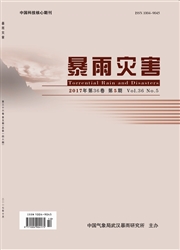

 中文摘要:
中文摘要:
利用常规气象观测资料和NCEP 1°×1°再分析格点资料,对2008年1月28—29日一次强降雪天气过程进行诊断分析,计算了非地转湿Q矢量流场、非地转湿Q矢量水平和垂直分布以及非地转湿Q矢量锋生函数。结果表明,非地转湿Q矢量辐合区是强降雪发生的有利区域,非地转湿Q矢量散度负值区和非地转湿Q矢量锋生函数正值区能较好地预报出未来6 h降水落区,且其中心数值大小与未来6 h降水强度存在正相关关系。
 英文摘要:
英文摘要:
A heavy snow process during January 28 to 29, 2008 is diagnosed by studying the ageostrophic wet Q vector stream field, horizontal and vertical distribution of the ageostrophic wet Q vector and the ageostrophic wet Q vector frontogenesis function based on the routine observational data and NCEP 1°×1°reanalysis grid data. The results suggested that snowfall is most likely happened in a ageostrophie wet Q convergent area. The negative area of the divergence of the ageostrophic wet Q vector and the positive area of the ageostrophic wet Q vector frontogenesis function could forecast the snow area of six hours in the future correctly, and its center value had positive correlation to the intensity of six hours precipitation in the future.
 同期刊论文项目
同期刊论文项目
 同项目期刊论文
同项目期刊论文
 期刊信息
期刊信息
